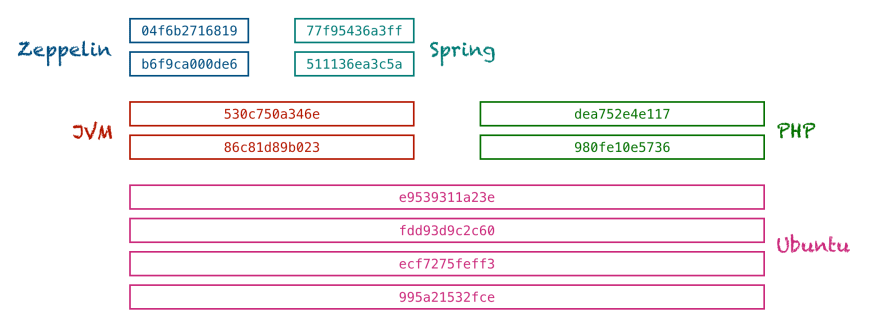Introduction
- Docker’s rise since its 2013 launch.
- Popular for its automation and container deployment capabilities.
- Offers portability, consistency, and efficiency.
Basic Architecture
- Docker: Automates deployment inside software containers.
- Containers: Isolated instances enabled by the OS kernel.
- Multiple implementations; Docker is a prominent one.
Docker Images and Dockerfiles
- Docker operates using ‘images’, which are like blueprints for containers.
- Dockerfiles define how to build these images.
Dockerfile
- Example Dockerfile: Sets up OpenJDK, installs Python, and prepares the environment.
FROM openjdk:8u212-jdk-slim
RUN apt-get update \
&& apt-get install -y --no-install-recommends \
Python3=3.5.3-1 \
Python3-pip=9.0.1-2+deb9u1 \
&& rm -rf /var/lib/apt/lists/*
COPY requirements.txt requirements.txt
RUN pip3 install --upgrade -r requirements.txtDocker Registries and Hosts
- Images stored in repositories, known as Docker registries.
- Docker Hub is a popular public registry.
- Docker host: A Linux machine running the Docker daemon.
Docker Architecture Overview
- Illustration of Docker’s basic architecture.
- Interaction between client, host, and registry.
Container Isolation in Docker
- Key concepts:
- cgroups
- namespaces
- image-layers
- virtual network bridges
- These tools collectively enable container isolation and functionality.
Control Groups (cgroups)
- cgroups: Assign resources to process groups for isolation.
- Example: Allocating specific CPU cores and RAM to different applications.
- Essential for resource management and isolation.

Namespaces in Docker
- Namespaces: Isolate and virtualize system resources.
- Types: PID, hostname, user IDs, network, IPC, filesystems.
- PID namespaces example: Process isolation within containers.
PID Namespaces
- Linux organizes processes in a tree hierarchy.
- PID namespaces virtualize process IDs, creating isolation.
- Example: Isolating processes in a container from the host system.
1 /sbin/init
+-- 196 /usr/sbin/syslogd -s
+-- 354 /usr/sbin/cron -s
+-- 391 login
+-- 400 bash
+-- 701 /usr/local/bin/pstreeFilesystem Namespaces
- Virtualize parts of the filesystem tree for isolation.
- Allows mapping a subtree as a root in a namespace.
- Example: Different ‘virtual’ filesystem roots in Linux.

Other Types of Namespaces
- User namespace: Maps users inside a container to outside users.
- Network namespace: Isolates container’s network stack.
- Each namespace type adds a layer of isolation in containers.
Stackable Image Layers and Copy-On-Write
- Docker images are built in layers, each layer adding changes.
- Example: An image layer adding Python on top of an Ubuntu base.
- Efficiency through shared, immutable layers and copy-on-write.

Virtual Network Bridge
- Isolates container’s network using a virtual bridge.
- Connects virtual and physical network interfaces.
- Allows network isolation and configuration flexibility.

Connecting the Technical Dots
- Docker simplifies container creation using Linux capabilities.
- It automates the use of cgroups, namespaces, image layers, and network bridges.
- Streamlines deployment without deep Linux expertise.
Opportunities and Challenges of Docker
- Examining the benefits and potential issues with Docker adoption.
- Balancing Docker’s capabilities with real-world deployment considerations.
Opportunities with Docker
- Facilitates DevOps and CI/CD practices.
- Predictable deployments: “It works on my machine” problem solved.
- Integrates with major cloud and cluster managers.
- Enables quick scaling and fast failure recovery.
Challenges in Docker Adoption
- Security misconceptions: Containers don’t inherently secure applications.
- Risk of deploying inadequate or insecure containerized solutions.
- The “fat container” anti-pattern: Avoid heavy, complex containers.
- Deep Linux knowledge may be required for specific issues.
Frequently Asked Questions About Docker
Containers vs Virtual Machines
- Understanding the conceptual differences.
- Containers: Lightweight, use the host OS kernel, efficient for isolated applications.
- VMs: Heavier, require a hypervisor, suited for complete OS isolation.

Do Containers Truly Isolate?
- Containers provide isolation, but not absolute security.
- Proper configuration is key.
- Containers interact with the host and other containers, creating potential security gaps.
Impact of Containers on Production Stability
- Containers can increase stability but don’t guarantee error-free applications.
- Proper configuration and understanding of container interactions are crucial.
- Containers facilitate quick recovery and scaling.
Conclusion
- Docker: A powerful tool for efficient, isolated, and reproducible deployments.
- Requires understanding of its ecosystem and underlying Linux features.
- Not a one-size-fits-all solution; assess requirements before adoption.
“Putting broken software into a Docker container doesn’t make it any less broken.”